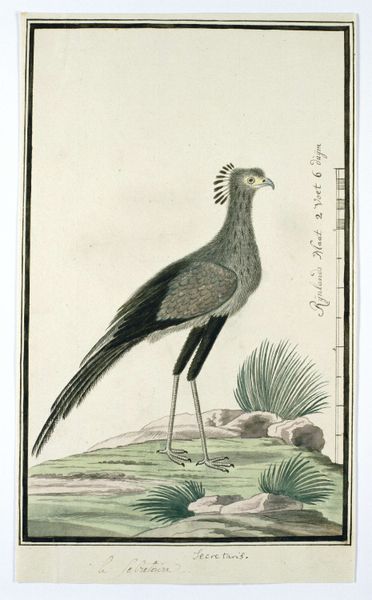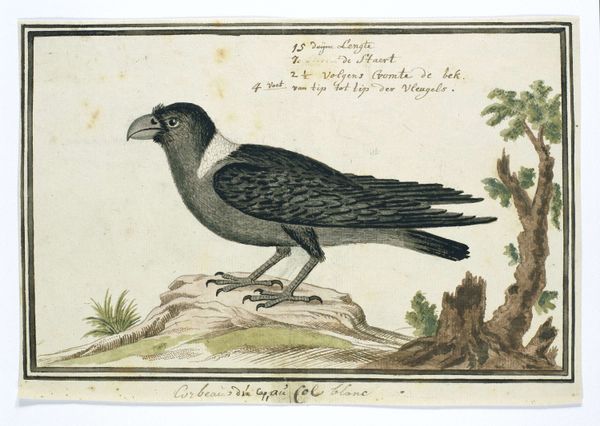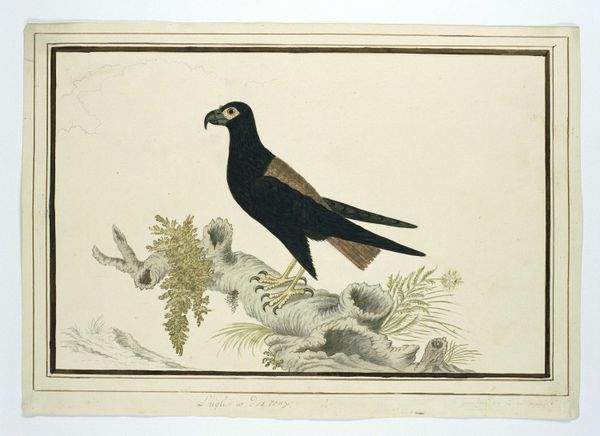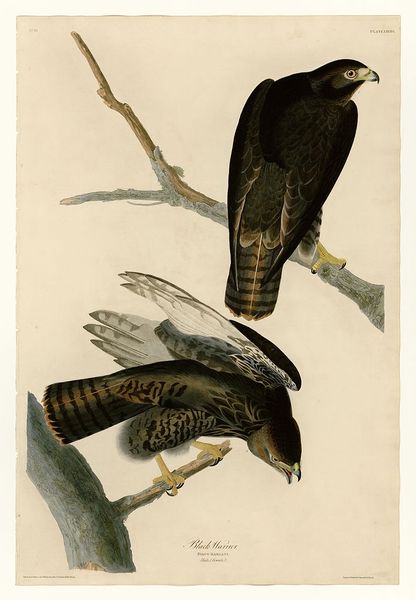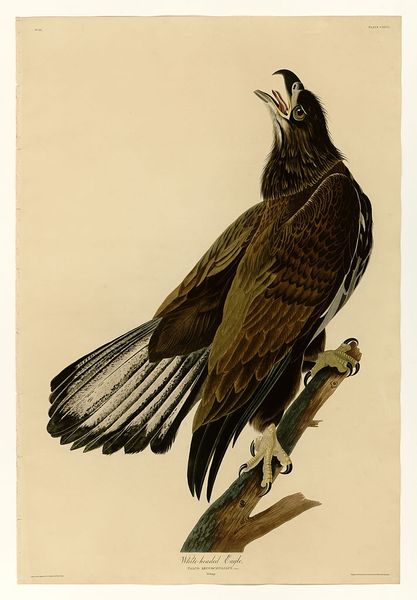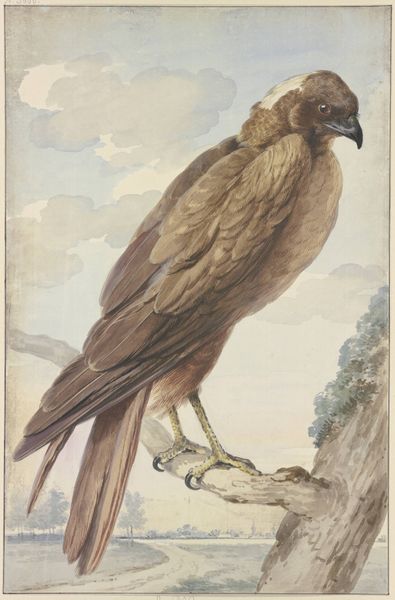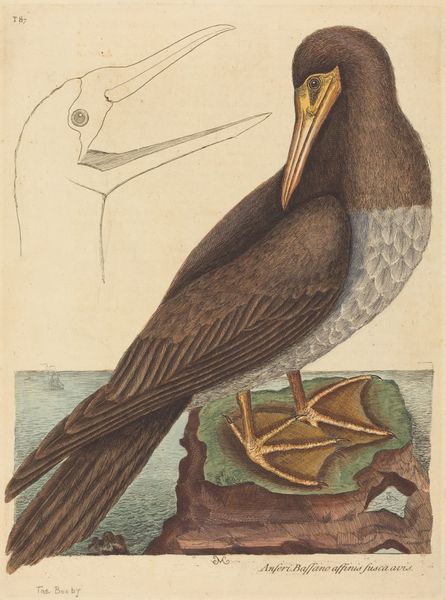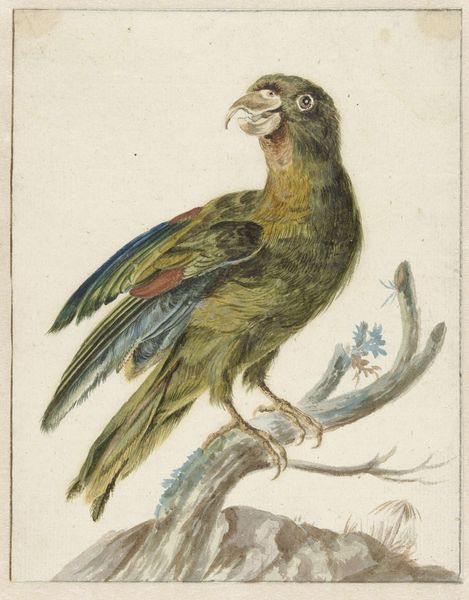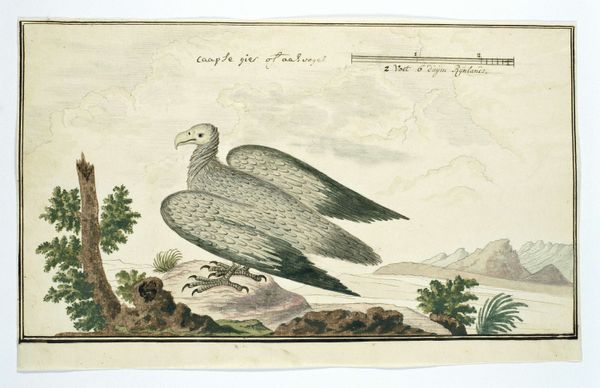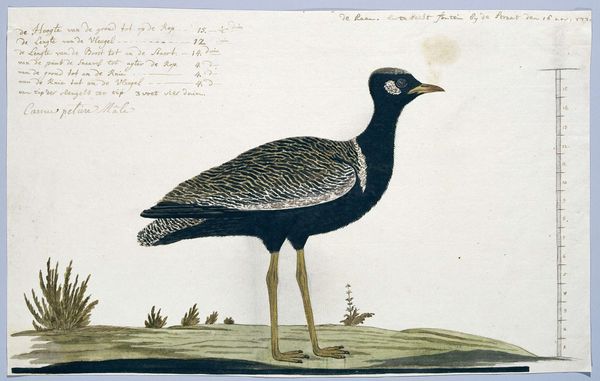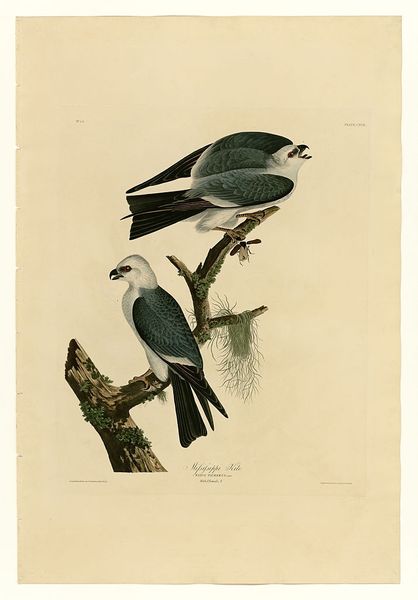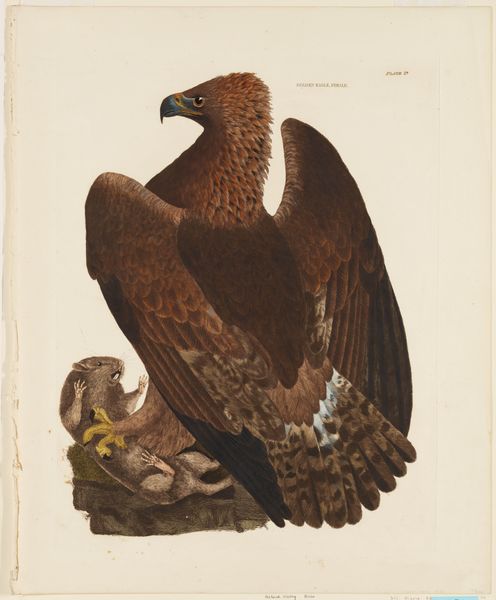
Dimensions: height 660 mm, width 480 mm, height 356 mm, width 299 mm, height 318 mm, width 280 mm
Copyright: Rijks Museum: Open Domain
Curator: The sharp lines and muted tones give Robert Jacob Gordon's watercolour and ink drawing, *Aquila verreauxii,* created between 1777 and 1786, an arresting presence, doesn't it? Editor: Indeed. The first impression is one of starkness and observation, yet also something powerful. It's more than a portrait; there's an implied sense of dominance, a regal bearing suggested by the bird's dark plumage and commanding gaze. Curator: Absolutely, Gordon was an important military figure, and this drawing needs to be placed in the historical context of scientific expeditions, reflecting colonial era attempts to document and classify the natural world. These representations had power, both in scientific understanding, and the claim to control. Editor: The choice of the Verreaux's eagle itself speaks to that power. Throughout different cultures, eagles are revered as symbols of strength, freedom, and keen vision. Seeing it rendered here so precisely reinforces its totemic significance and possibly implies an agenda by colonizers through visual representations. Curator: Gordon's attention to detail reinforces that systematic visual appropriation, a tool that served to further claims over lands, culture, and resources. But I'd push back gently, there is artistry, an emergent Romantic sensibility in the stark landscape beyond. Editor: You are right; and these aren’t cold documents. It is as much of a capture of an external truth as it is an impression or even, an intervention within the symbolic language of the time. Perhaps an interrogation through art of a relationship to power. Curator: This blending of science and emerging romantic sensibilities speaks to the contradictions within the project of documenting the "new" world. It invites us to consider who decides what we see and why. Editor: And it prompts one to question not only the colonial gaze, but our own perspective—how do we interpret symbols of power, and what do they represent to us today?
Comments
No comments
Be the first to comment and join the conversation on the ultimate creative platform.
